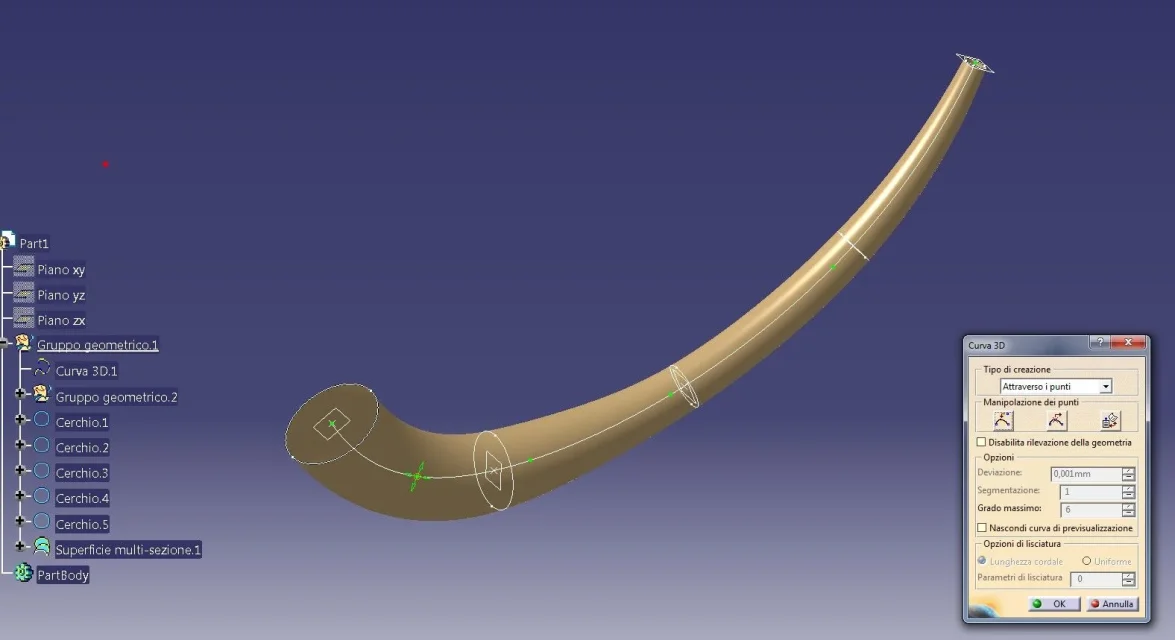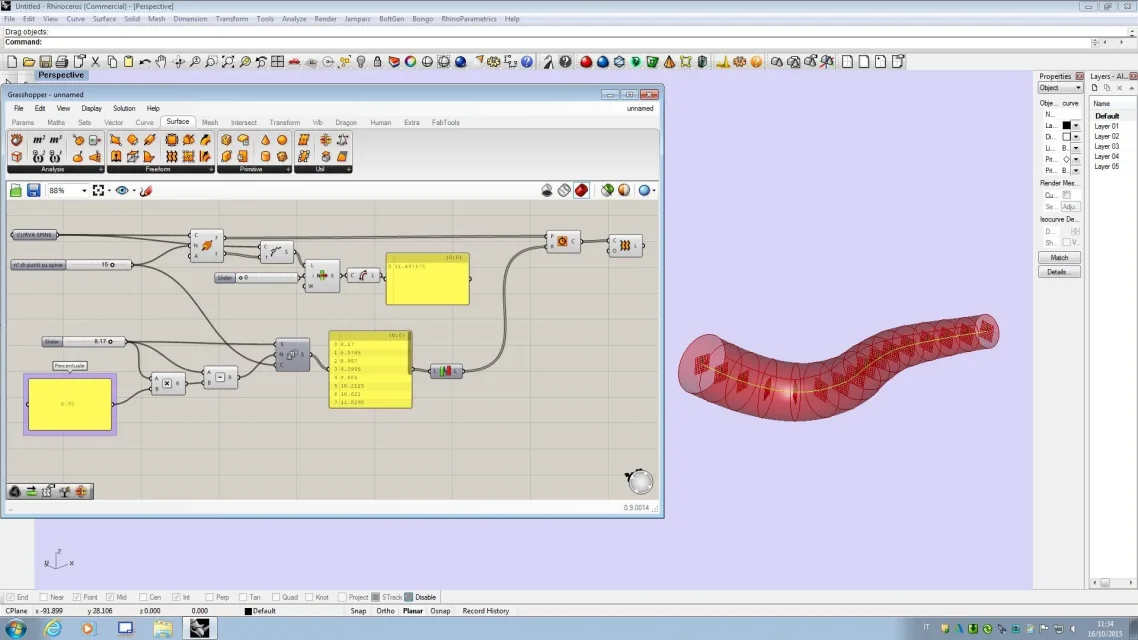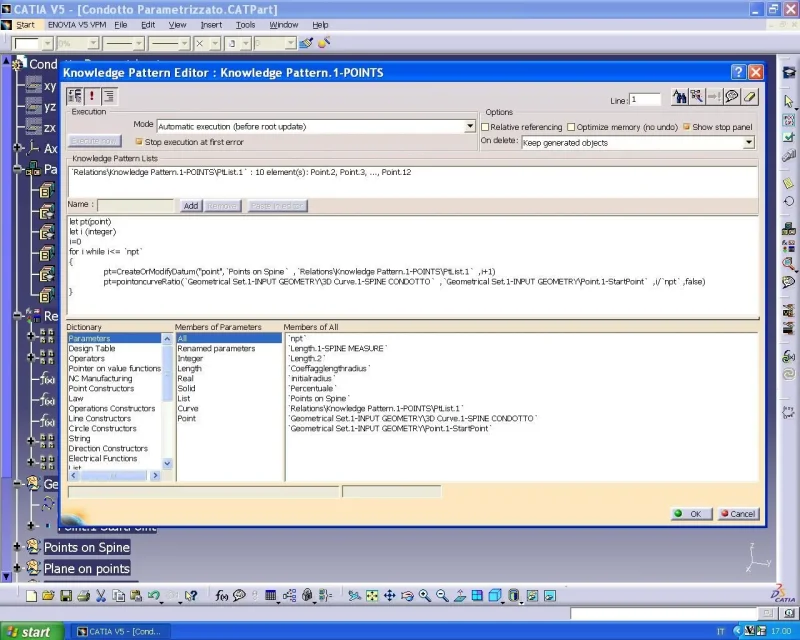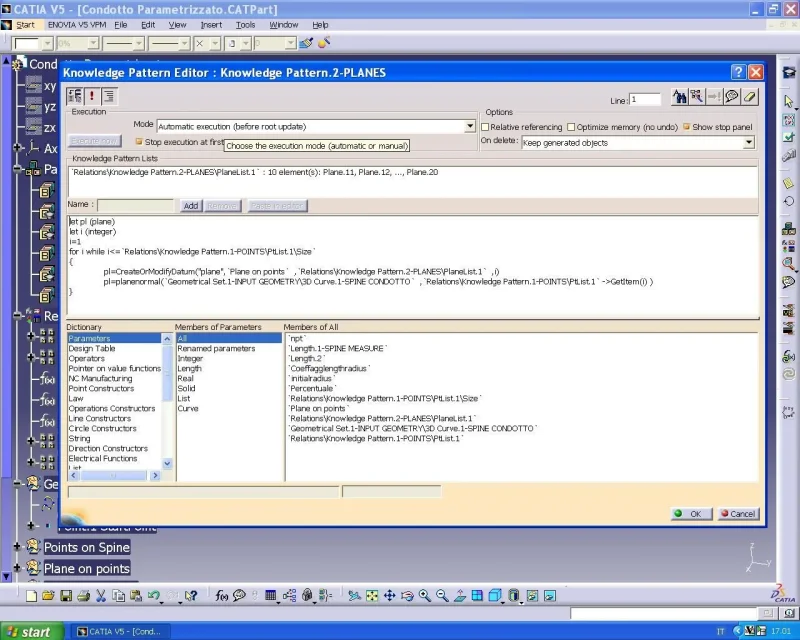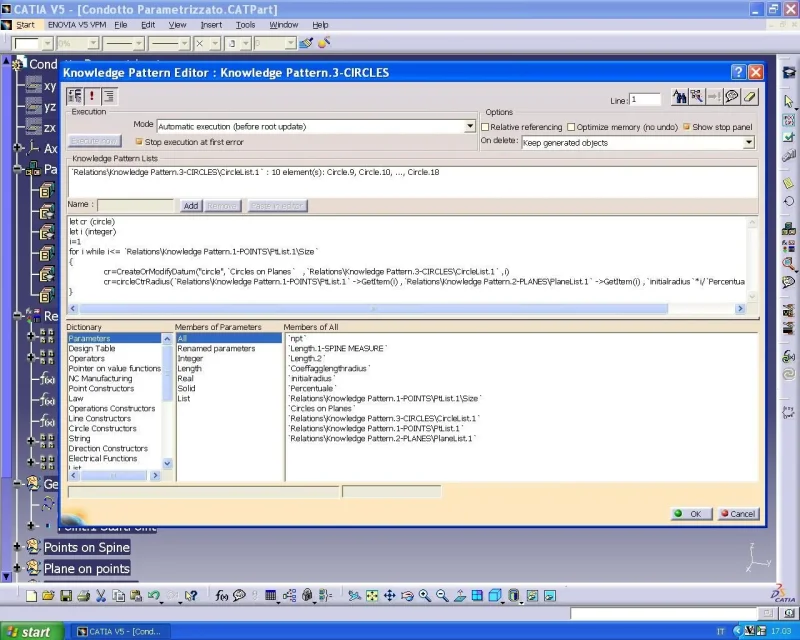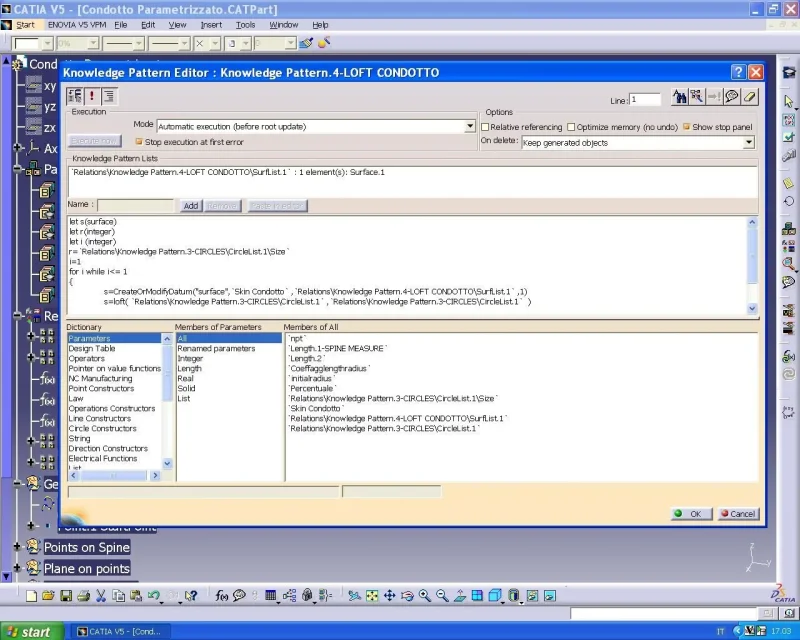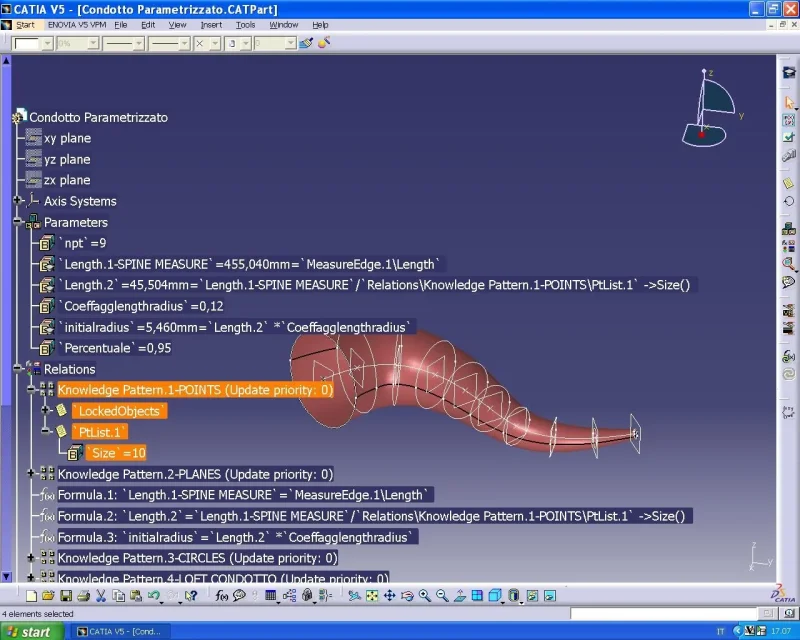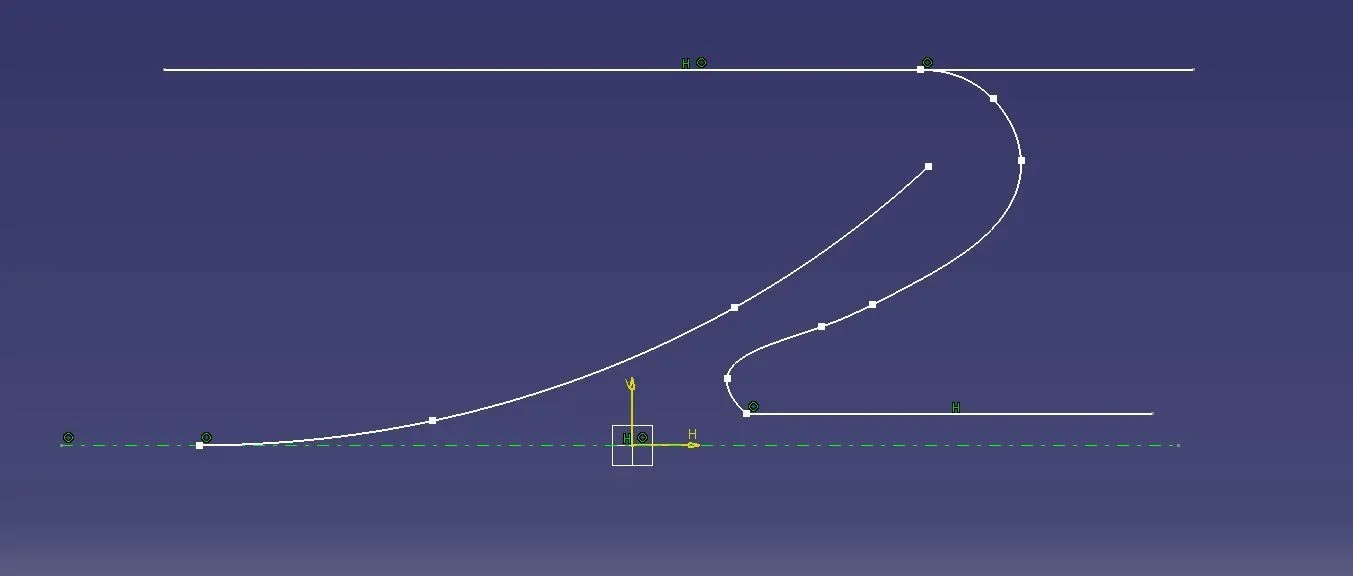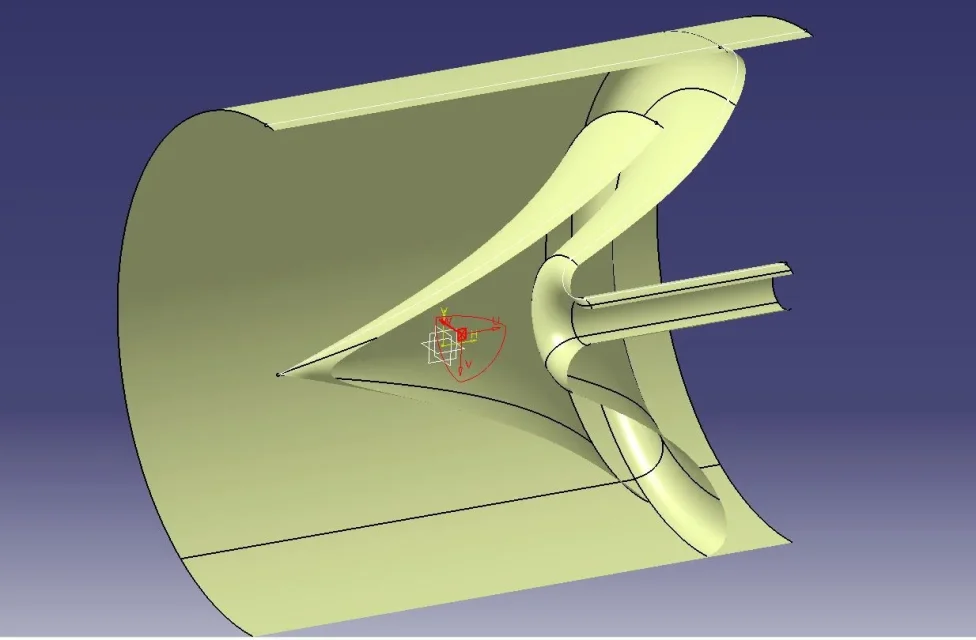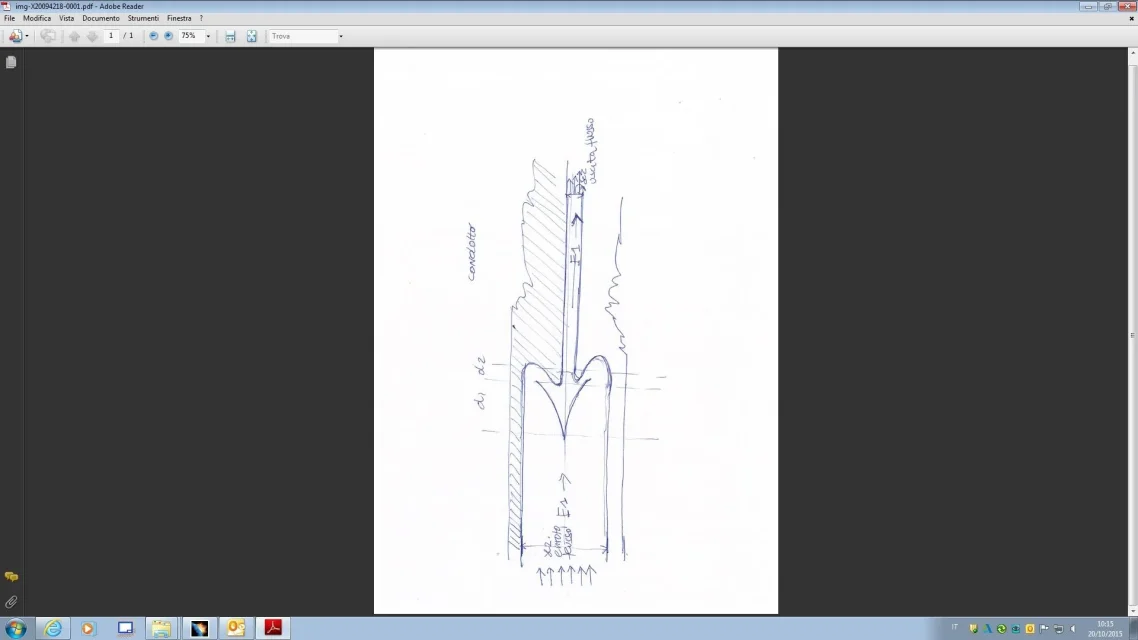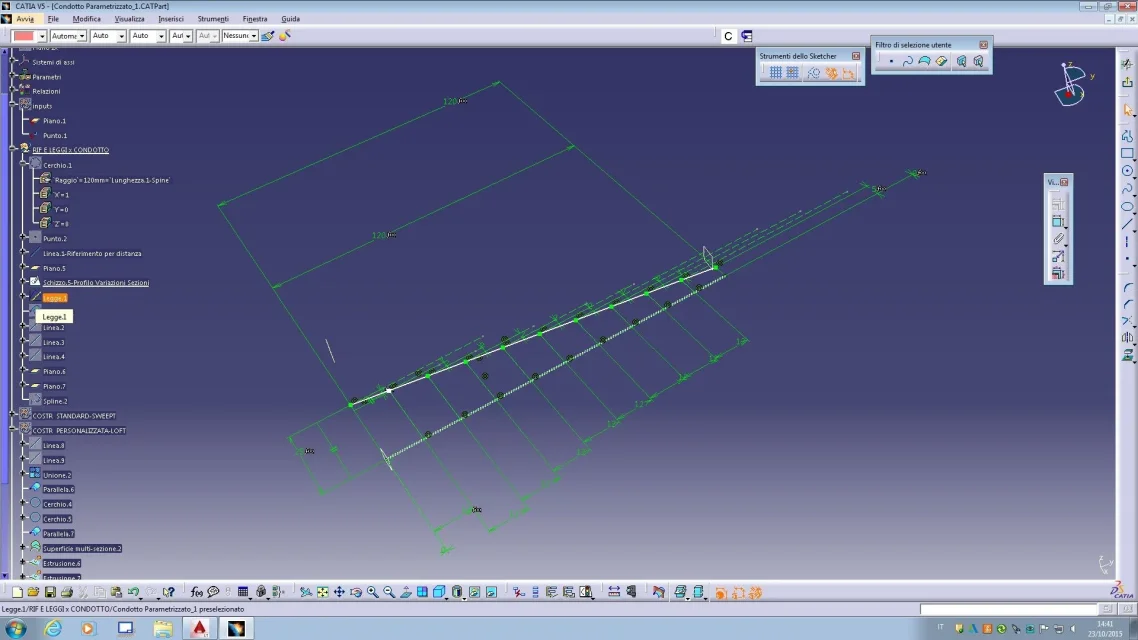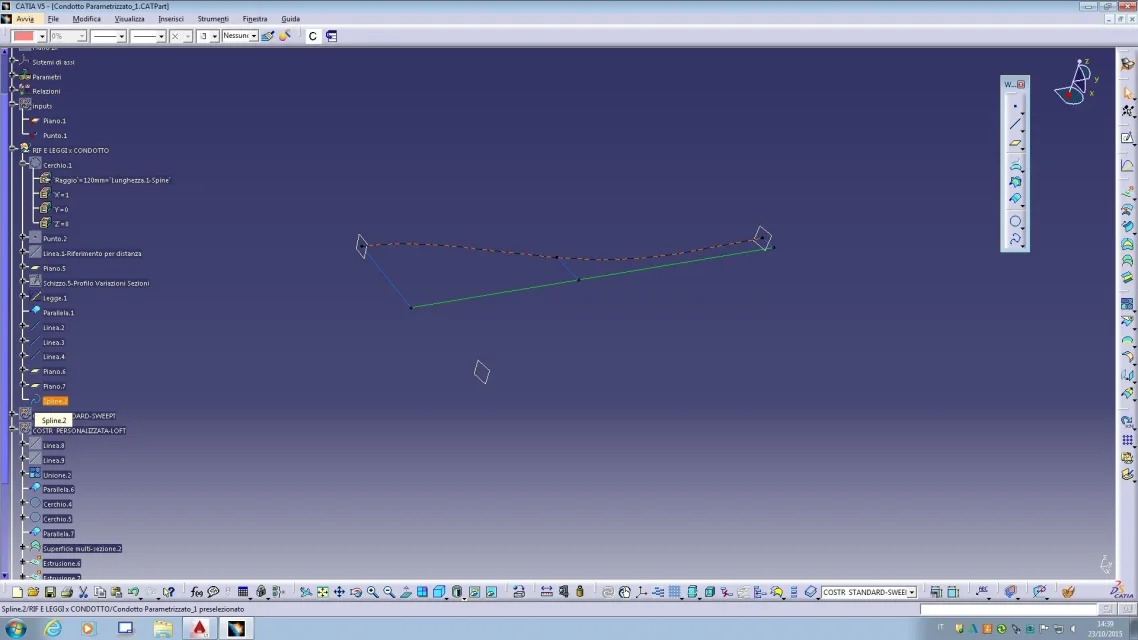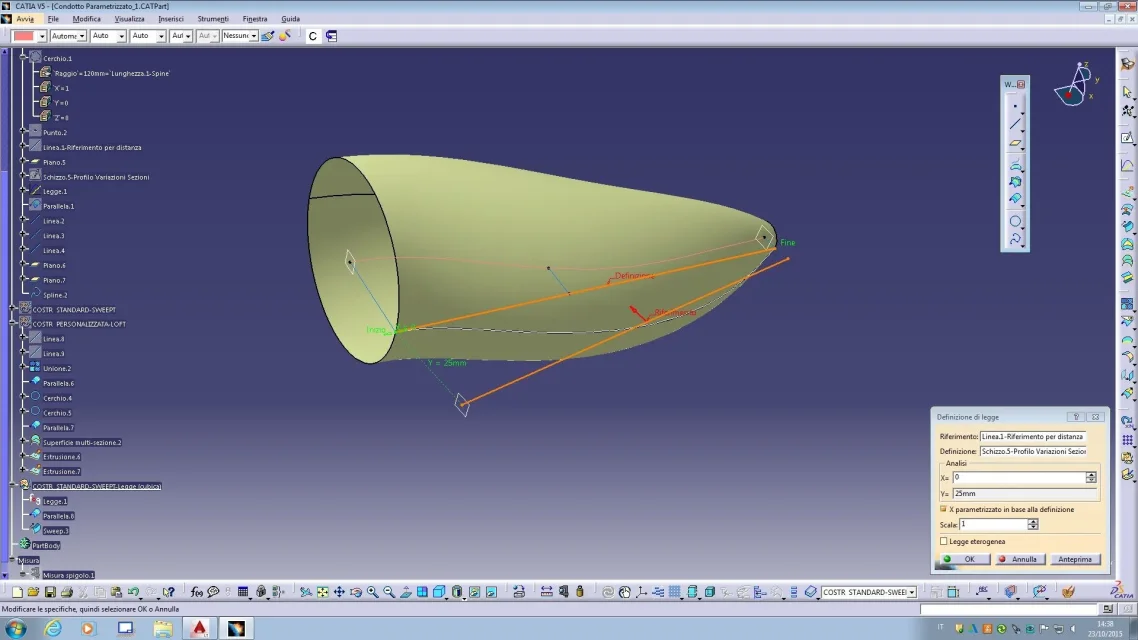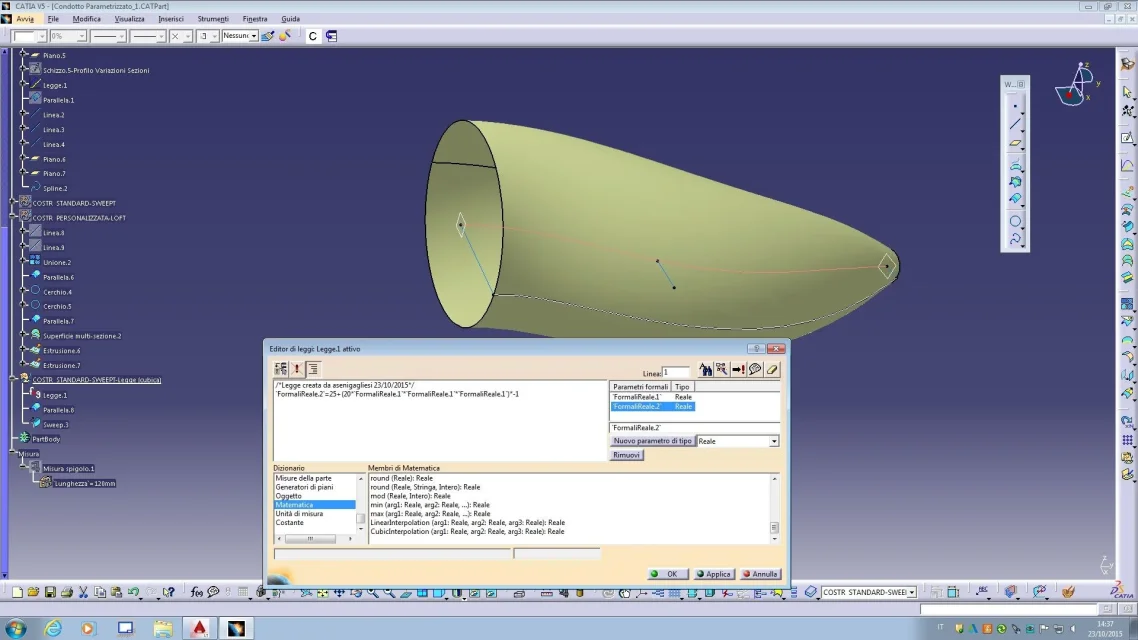sir--kris
Guest
Hello everyone,
I found myself faced with the need to add some equidistic points on a spline.
I tried to add them with the appropriate command in the sketch "equidistant points" and it does, only though I would need it to be something associative!
I would like to explain better: I would like that, once inserted for example 10 points equidistanziati on the spline and subsequently change the spline, they redistribute.
Unfortunately this does not. Catia divides them according to the length that finds when I insert them, but after it does not redistribute them.
I also tried to bypass the problem by inserting points outside the sketch with the "point on curve" command and giving it for example a percentage rate from the beginning of the spline at each point, but also in this case, if I change the spline, these do not redistribute, in short they are not associative!
Is there a command or a way to get this? I don't have the freestyle module, which is missing something in there?
my real final purpose is to insert circles centered on a spline (the latter free to be modified) that however have the equidistanziati centers, obviously equidistanziati on the arc length not minimal distance. I tried to put a quota on the arc of curve, but hamè does not, ie it takes the minimum direct distance, or at the max the whole spline and not the center of the circumference.
I also thought of making so many small splines (of equal length) between one center and the other of the circumferences and giving it the bond of parallelism to the point of contact between them and I can...but then if I go to change the spline by dragging the points ... the pc gets in trouble and slows everything, sign that behind is making an absurd computational effort... and I can no longer change the spline at the end!
the pc is the workmanship (a workstation also suitable for axioms of 3000 parts) so I think that more than the pc is wrong the approach to solving the problem.
What do you recommend?
I attach a photo to make the idea....
Sir...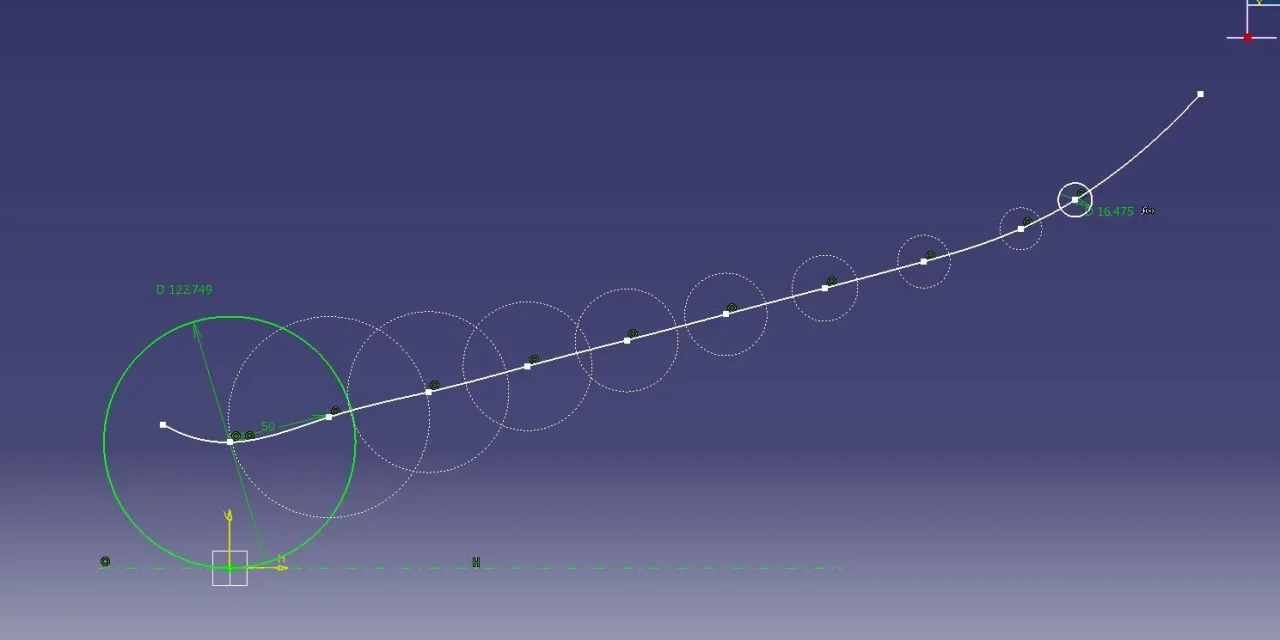
I found myself faced with the need to add some equidistic points on a spline.
I tried to add them with the appropriate command in the sketch "equidistant points" and it does, only though I would need it to be something associative!
I would like to explain better: I would like that, once inserted for example 10 points equidistanziati on the spline and subsequently change the spline, they redistribute.
Unfortunately this does not. Catia divides them according to the length that finds when I insert them, but after it does not redistribute them.
I also tried to bypass the problem by inserting points outside the sketch with the "point on curve" command and giving it for example a percentage rate from the beginning of the spline at each point, but also in this case, if I change the spline, these do not redistribute, in short they are not associative!
Is there a command or a way to get this? I don't have the freestyle module, which is missing something in there?
my real final purpose is to insert circles centered on a spline (the latter free to be modified) that however have the equidistanziati centers, obviously equidistanziati on the arc length not minimal distance. I tried to put a quota on the arc of curve, but hamè does not, ie it takes the minimum direct distance, or at the max the whole spline and not the center of the circumference.
I also thought of making so many small splines (of equal length) between one center and the other of the circumferences and giving it the bond of parallelism to the point of contact between them and I can...but then if I go to change the spline by dragging the points ... the pc gets in trouble and slows everything, sign that behind is making an absurd computational effort... and I can no longer change the spline at the end!
the pc is the workmanship (a workstation also suitable for axioms of 3000 parts) so I think that more than the pc is wrong the approach to solving the problem.
What do you recommend?
I attach a photo to make the idea....
Sir...


